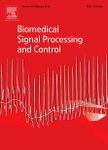版权所有:内蒙古大学图书馆 技术提供:维普资讯• 智图
内蒙古自治区呼和浩特市赛罕区大学西街235号 邮编: 010021

作者机构:Univ Oviedo Dept Elect & Elect Engn Oviedo Asturias Spain Univ Oviedo Dept Comp Sci Oviedo Asturias Spain
出 版 物:《BIOMEDICAL SIGNAL PROCESSING AND CONTROL》 (生物医学信号处理与控制)
年 卷 期:2023年第80卷第Part1期
页 面:000-000页
核心收录:
学科分类:0831[工学-生物医学工程(可授工学、理学、医学学位)] 10[医学]
基 金:Spanish Ministerio de Economia e Industria de Espana [PID2020-112726RB-I00] Agencia Estatal de Investigacion (AEI, Spain) [RED2018-102312-T] Principado de Asturias [SV-PA-21-AYUD/2021/50994] Ministerio de Ciencia e Innovacion CERVERA Excellence Network project [CER-20211003]
主 题:Classification Ensemble of classifiers Electrooculogram Human-computer interface Machine learning
摘 要:Electrooculogram (EOG) is the measurement of the biopotential generated by eye movement. These signals are crucial for people with severe motor disabilities because they rarely suffer alterations in eye movement. Therefore, the correct classification of these signals could find application in the design of simple user interfaces that allow independence and communication skills. This paper presents a comparison of the main classification techniques in the literature for the control of EOG-based human-computer interfaces (HCIs). Static threshold, K-nearest neighbor (KNN), artificial neural network (ANN), and support vector machine (SVM) techniques, together with two new ensembles of classifiers. One is based on a voting scheme while the other employs two stages to encode the outcomes from the KNN, SVM, and ANN classifiers. All classifiers were compared based on four parameters - precision, specificity, sensitivity, and accuracy - to select the most appropriate approach in real-time. This work also provides a novel data set consisting of signals from nine healthy participants and compares the above methods also on another public data set. Machine learning-based models proved to be more robust for continuous use of an EOG-based HCI, while static thresholds are better for specific and repetitive actions.